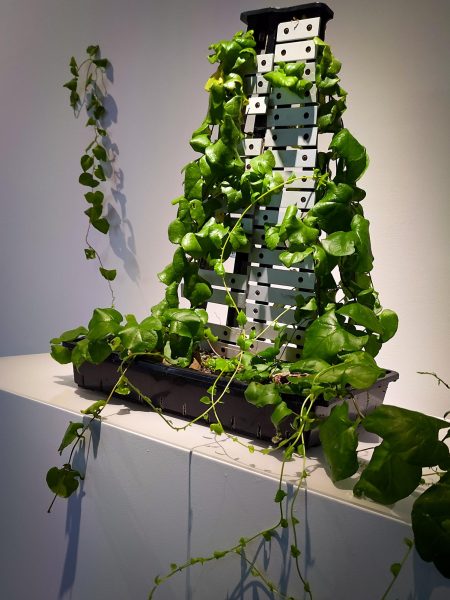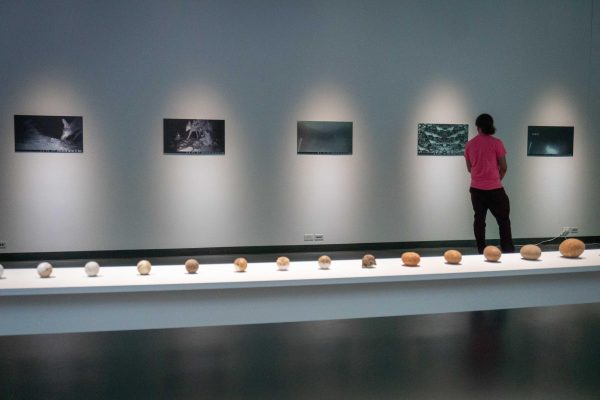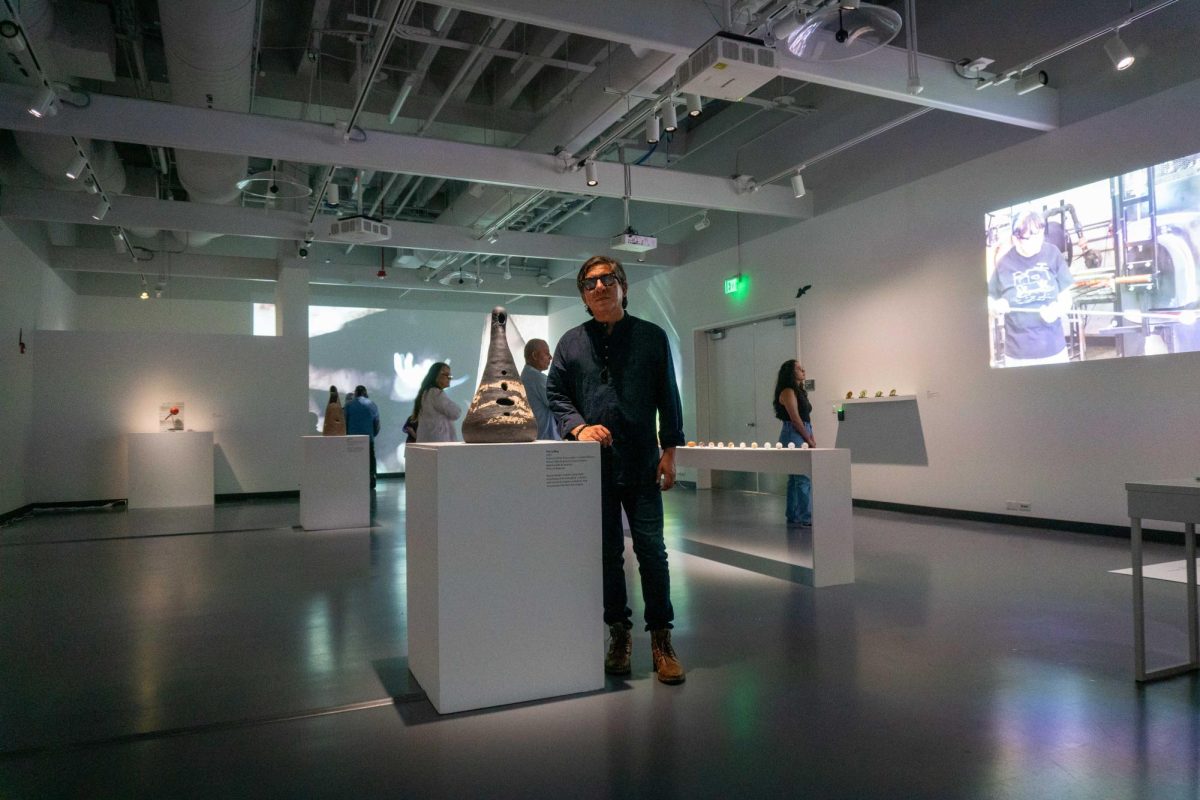The saying goes, “Stop and smell the roses,” but it’s not that simple in San Diego—we don’t have roses, we have chaparral.
The bustle of urban life is constant and demanding. It’s rare that we appreciate the natural world that is our community and home. Francisco Eme’s recent exhibition, “The Resistance of the Eco & La Eco-Resistencia,” works to spread awareness and appreciation of all we’re missing out on.
Hosted by the Mesa College Art Gallery, the free-admission experience opened on Aug. 21 and is available for public viewing until Sept. 14. From metal photo prints and film to bird whistles and sculptures that emit sound, Eme’s diverse pieces center on the struggle between human
influence and the wildlife of a San Diego canyon.
The project began during the pandemic when Eme turned his attention to the canyon by his house. He removed the invasive plants and focused on indigenous species.

As a sound artist, Eme started to record audio and video footage of animal activities. His project expanded as he collected artifacts from the canyon and collaborated with other artists to create crafts based on its physical attributes, including scientific data. Eme then worked with Alessandra Moctezuma, the Mesa College gallery director of 22 years, to create an immersive, multi-sensory experience.
Eme wanted the exhibit to open minds to everyday activities outside of human life. The collected works demonstrate the strength of eco-resistance, which ties into his work with sound.
“I constantly think about the echo. Poetically, it symbolizes something that resists to die—to extinguish,” Eme said. “When there’s an echo, the sound that you emit repeats itself, little by little until it disappears.”
Both the animals and people are making echoes, but it takes an artist to tie the two together in an understandable way.
The exhibition’s format is what makes it powerful. Among those in attendance were Gerda Iturate and her husband, Luis. The couple are local artists who have lived in San Diego for four years, and they own a ranch with a backyard—not unlike Eme’s. Gerda Iturate felt a sense of peace and stillness in the dimly lit exhibit hall. She took her time to explore the installation.
“It’s like you’re in the dark but there’s all of these stars. There’s nothing in the way of (Eme’s) work and me. I’m right there with him,” she said.
Moctezuma said her favorite pieces are the sculpture speakers that play the sounds of nocturnal activity, making the essence of nature palpable.
“It’s encapsulated. It’s like he’s trapped it in this vessel. So it’s almost like the magic lamp. You rub it and (aspects of the natural world) are gonna come out,” Moctezuma said.
The magic derives from recognizing the beauty and art in the nature that surrounds San Diego. For many locals, a connection with the environment already exists. However, as Luis Ituarte pointed out, people often take the Earth and all it offers for granted. Therefore, the aim is to recognize our place in the world amongst the community of other species.
The exhibition offers this new perspective in a way that still has a comfortable familiarity to it. Kate Zimmerman, a gallery assistant who constructed the exhibition, grew up locally with a

backyard that resembles the canyon.
“(The collection of pieces) sort of feels like a neighbor sharing something with you. I guess after the pandemic, that sense of community is something that I’m reaching for,” they said. “I really hope (the exhibition will) help people see (local wild animals) more as other parts of the community rather than something that’s outside of us.”
We must be careful and compassionate in not blocking out the sounds, the voices, of the natural world. The Ituartes noted that newer generations are more receptive to environmental activism. Furthermore, Eme’s artistic advocacy makes the mission more locally apparent to people like Zimmerman.
“A lot of the rhetoric you hear about in environmentalism is places that are far-flung and exist only in the abstract. Going forward I’ll (focus on) stewarding my own community,” Zimmerman said.






